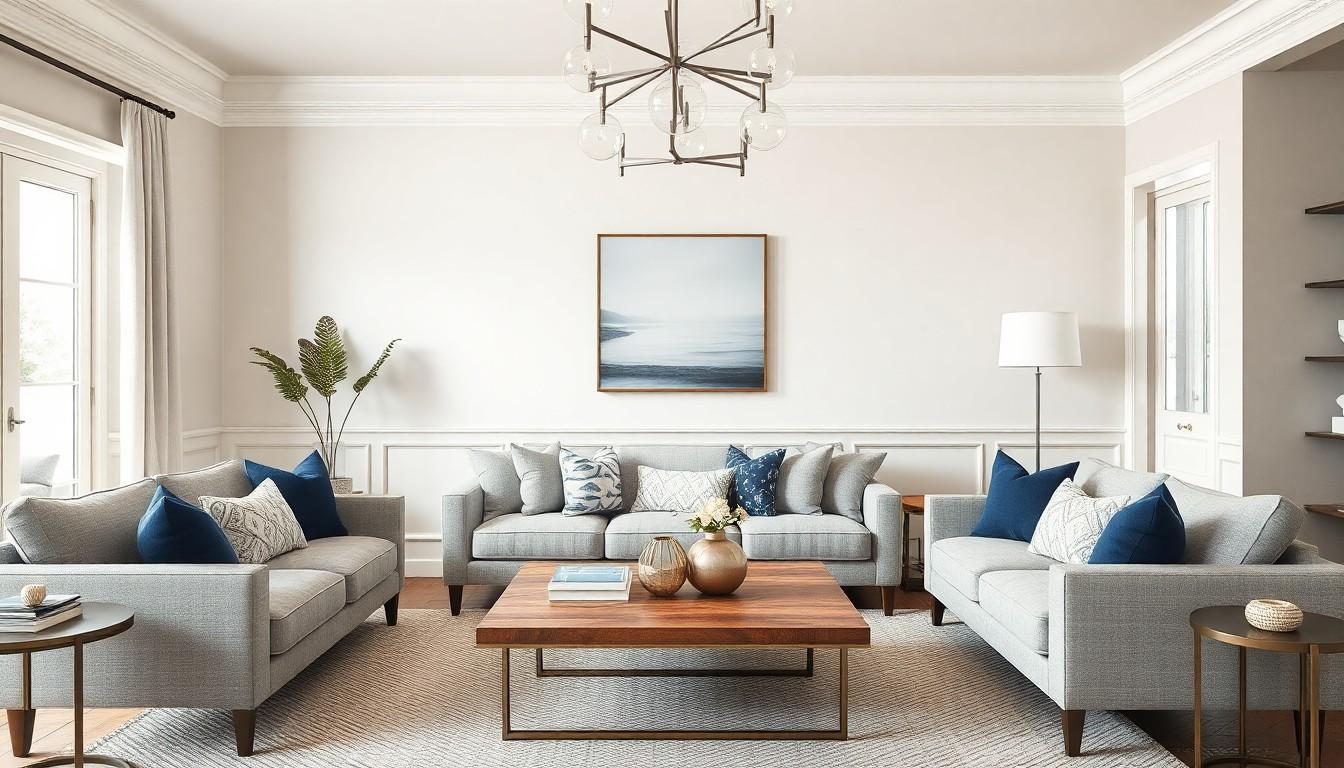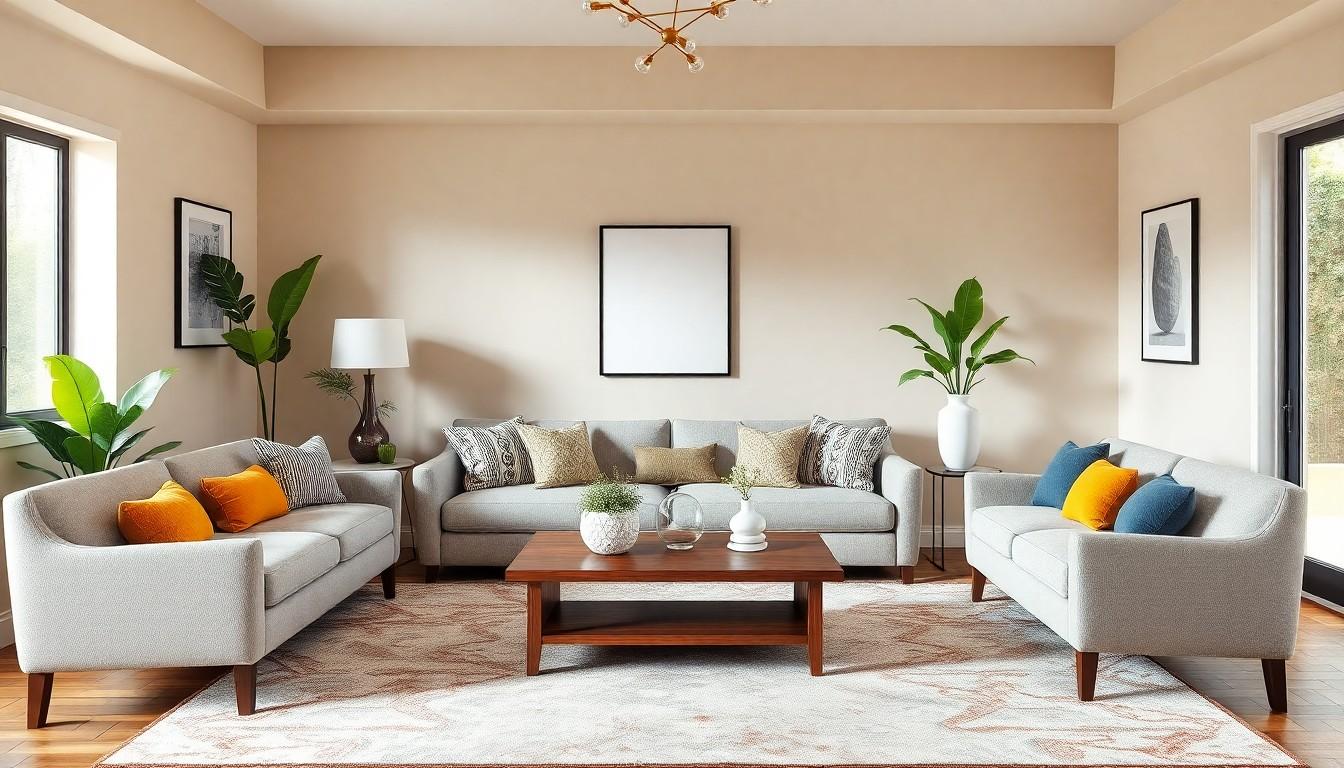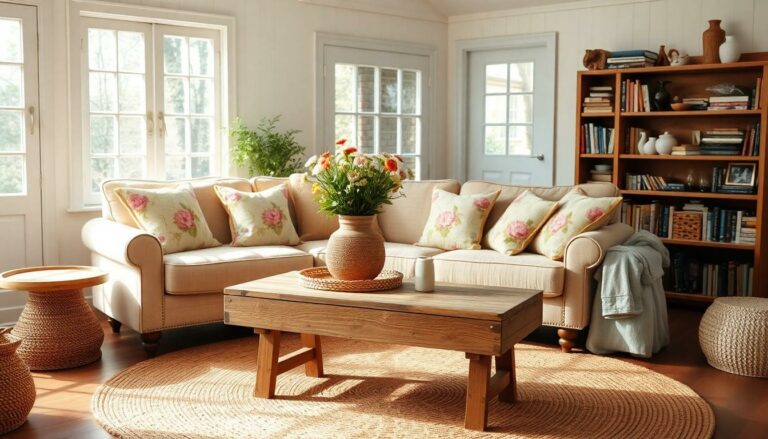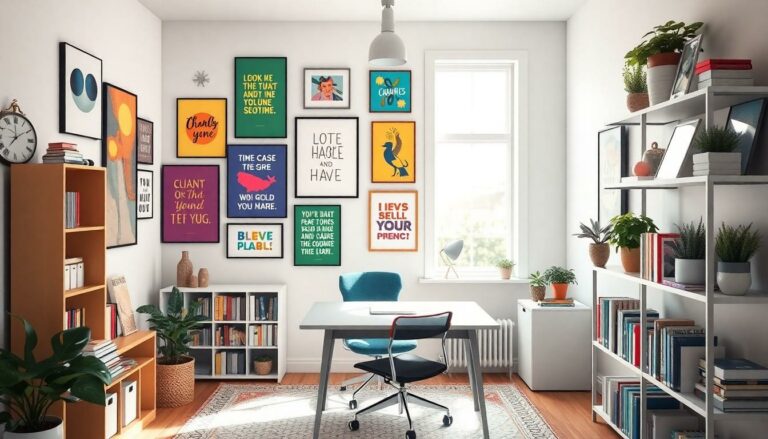Transitional home decor is like the stylish chameleon of interior design. It effortlessly blends traditional elegance with modern flair, creating spaces that feel both timeless and fresh. If your home’s stuck in a design rut or you’re just tired of the same old look, this trend might be your ticket to a stylish upgrade.
Imagine cozying up on a sleek sofa that nods to classic design while showcasing contemporary art pieces. It’s the perfect balance between comfort and chic. Transitional decor invites you to mix and match, proving that rules are made to be broken—just like that one friend who insists on wearing socks with sandals. So, whether you’re a design novice or a seasoned pro, let’s dive into the world of transitional decor and discover how to transform your space into a harmonious haven that reflects your unique style.
transitional home decor
Transitional home decor blends traditional and modern design elements seamlessly, offering a balanced aesthetic that suits various styles. This approach caters to diverse tastes, making it accessible for everyone.
Definition and Characteristics
Transitional decor embodies a mix of classic and contemporary styles. Clean lines and minimal ornamentation define its look, promoting a sense of calm in living spaces. Neutral colors serve as the foundation, complemented by bold accents that draw attention. This style prioritizes comfort and functionality, ensuring that each piece serves a purpose. Traditional aspects like wood furniture and classic shapes harmonize with modern materials such as glass and metal. Overall, transitional decor creates environments that feel inviting yet polished.
Key Elements of Transitional Style
Furniture selection plays a crucial role in transitional design. Sofas and chairs often feature simple silhouettes adorned with modern fabrics. Lighting fixtures, like chandeliers and floor lamps, showcase contemporary designs while maintaining a classic elegance. Accessories such as artwork and throw pillows add personality without overwhelming the space. Textures also enhance the decor; combining smooth surfaces with woven elements creates visual interest. Area rugs often tie the room together, providing warmth and definition. All these elements contribute to a cohesive, sophisticated look that remains inviting and stylish.
Popular Colors and Materials

Transitional home decor emphasizes a blend of colors and materials that enhance its signature style. This balance creates a cohesive and inviting atmosphere.
Color Palettes for Transitional Decor
Neutral shades form the foundation of transitional color palettes. Shades like beige, gray, and taupe offer versatility and warmth. Accent colors such as navy, emerald green, and soft pastels add depth and personality. These colors contribute to a serene yet sophisticated aesthetic. Soft whites can brighten spaces, providing contrast against darker hues. Each chosen color harmonizes with others, ensuring a timeless look that adapts to various tastes.
Common Materials Used
Transitional decor integrates a variety of materials, showcasing an elegant blend of the traditional and contemporary. Wood remains a staple, often in rich finishes like oak and walnut, preserving a timeless appeal. Glass elements such as light fixtures and tabletops introduce a modern touch, enhancing openness. Metal accents, particularly in chrome or bronze, provide visual interest and a polished finish. Fabrics like linen, cotton, and wool contribute comfort while adding texture. Each material plays a crucial role in achieving the balanced aesthetic characteristic of transitional decor.
Furniture and Accessories
Transitional home decor emphasizes selecting the right furniture and accessories for a cohesive look. Pieces must blend traditional charm with modern simplicity.
Choosing the Right Furniture
Opt for furniture that features clean lines and understated elegance. Sofas with neutral upholstery, such as gray or beige, serve as great focal points. Pair these with wooden coffee tables showcasing rich finishes that add warmth. Consider selecting accent chairs that incorporate bold colors like navy or emerald green to provide contrast. When it comes to dining tables, choose those made from solid wood, enhancing both beauty and functionality. Mix in contemporary pieces, such as metal or glass side tables, to reinforce the transitional style.
Accessorizing with Transitional Decor
Focus on accessories that highlight simplicity and character. Use decorative pillows in various patterns and textures to add depth and interest. Select art pieces that embody modern styles while remaining grounded in traditional themes. Lighting fixtures, such as sleek pendant lights or understated floor lamps, contribute to an inviting atmosphere. Area rugs play a significant role, defining spaces and layering textures. Incorporate greenery, like potted plants, for natural vibrancy, bringing life into the decor. Each accessory should enhance the overall ambiance without overpowering the room.
Implementing Transitional Decor in Your Home
Implementing transitional decor enhances spaces through a blend of traditional and modern aesthetics. This style invites creativity while maintaining cohesion across rooms.
Living Room Ideas
Start by selecting furniture that showcases clean lines and timeless designs. Neutral sofas paired with textured throw pillows create a welcoming atmosphere. Add a sleek wooden coffee table for balance. A contemporary area rug anchors the space, providing warmth underfoot. Accent chairs in bold colors introduce personality while maintaining harmony. Incorporate stylish lighting fixtures that highlight artwork or architectural features, contributing to the room’s overall sophistication. Lastly, use plants to infuse life and freshness, further enhancing the inviting feel of the living room.
Bedroom Inspirations
In the bedroom, prioritize comfort through a layered bedding approach. Begin with a neutral bed frame and enhance it with plush pillows and soft throws for visual interest. Choose bedside tables with minimalist designs, providing functionality without clutter. Incorporate a modern dresser to complement existing decor while ensuring practicality. Wall art featuring simple, serene imagery creates a peaceful ambiance conducive to relaxation. Use soft, ambient lighting to set a tranquil atmosphere. Additionally, place a cozy rug by the bed, which contributes warmth and texture underfoot, completing the serene transitional aesthetic.
perfect way to express individuality
Transitional home decor offers a unique opportunity to create spaces that feel both timeless and contemporary. By blending traditional and modern elements, anyone can achieve a look that reflects their personal style while maintaining comfort and functionality. The versatility of this approach makes it suitable for any room in the home.
With careful selection of colors, materials, and furnishings, individuals can craft a harmonious environment that invites relaxation and sophistication. Embracing transitional decor not only revitalizes living spaces but also enhances the overall ambiance, making every area feel welcoming and stylish. It’s a perfect way to express individuality while enjoying the best of both design worlds.




